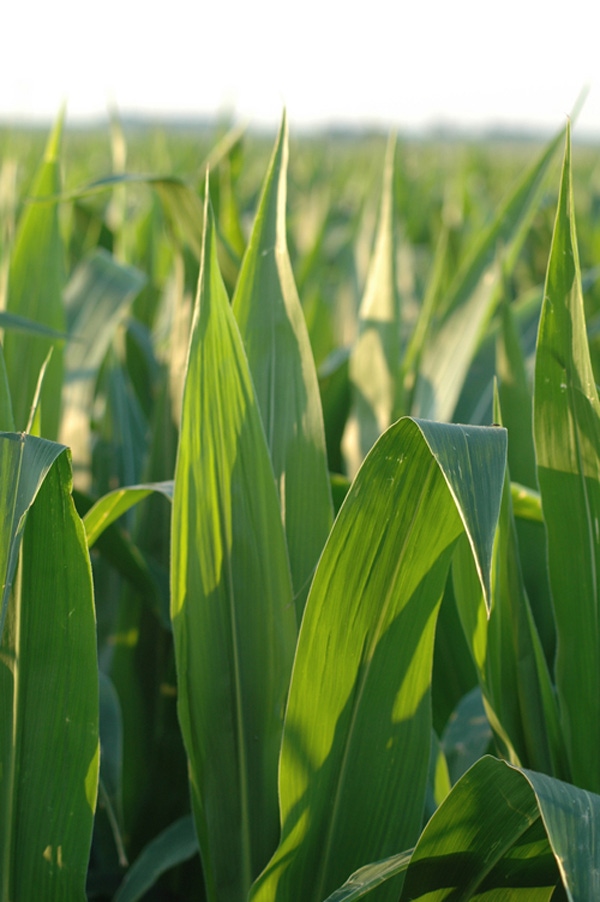July 24, 2015

Crop condition ratings in parts of the Corn Belt are on a steady downward trend, mostly due to standing water, whether from earlier this summer or right now, says Emerson Nafziger, University of Illinois crop scientist. Soil nitrogen levels have also fallen considerably, he says, dropping to 50 lbs/acre or below in the top 2 feet of soil.
For the crop that is well past pollination, the number of kernels developing per ear is an indicator of maximum yield potential. According to Nafziger, crops with badly damaged root systems have, in most cases been showing pale or yellow leaves, death of lower leaves, and stunting, and either show no ears at all or have very low numbers of kernels.
“Their yield potential is low and can’t be improved,” he says.
In some cases, Nafziger said that the crop is only now starting to show loss of green color or yellowing, including lower leaf firing that may be moving up the plant. Some of this is occurring in parts of Illinois that have started to dry out where crops are expected to start recovering. This still seems to be occurring mostly in lower parts of fields, where water may have stood temporarily, perhaps several weeks ago, he says.
“It seems logical to think that nitrogen deficiency developing now in fields where standing water hasn’t been a big concern is due to loss of nitrogen finally showing up as the plant continues to take up nitrogen,” Nafziger says. “There certainly might be some of that happening.”
Another possibility, he added, is that limitations of the root system from earlier damage are only now showing up, especially as surface soils start to dry and roots start to draw water from a little deeper in the soil.
Can we know which is the case, and is there anything we can still do about it?
“Either of the situations might mean the crop could respond to nitrogen applied to the surface, as long as the nitrogen can get into the plant. Before spending the equivalent of about 10 bushels of corn to apply urea by air, though, it would be good to try to assess the yield potential and to try to figure out if the crop is in good enough condition with enough kernels to make a return on the investment likely,” Nafziger said. “There’s no sure indicator of the potential of the crop to respond, but as a start, it should have most leaves still intact and around 450 to 500 kernels developing per ear.”
Rescue nitrogen application options
If a decision is made to apply more nitrogen to a field, the rate should be restricted to no more than 40-45 lb and the nitrogen should be applied as soon as possible, he added. “Protecting urea with Agrotain should help reduce volatility, but if urea stays on the surface long enough (without enough rain to move it into the soil), it is not going to get into the plant to do much good anyway.”
Foliar nitrogen is another possible source of nitrogen. The lower rate of nitrogen applied (usually 10 lb per acre or less) might be enough to carry the crop until its roots can take up more nitrogen from the soil, Nafziger explains. “With any source, the idea is to keep deficiency from advancing. The amount of green leaf area is closely tied to grainfilling rate. Dribbling UAN could work, but getting it into tall corn without delay in fields with wet spots might be difficult.”
Even if temporary nitrogen deficiency can be relieved by supplemental nitrogen applied this late, Nafziger says that nitrogen will not prove to be the most limiting factor in most fields. “Yield prospects will depend mostly on the ability of the root system to continue to take up water, and along with it some nitrogen, through the next month to 6 weeks,” he said. “Some of the developing nitrogen deficiency that we are seeing now may be the result of root systems that are damaged more than we think. In that case, even moderate stress as surface soils dry out might send plants into a downward spiral.
“There’s no good diagnostic for root system intactness, but pulling a few plants might provide a hint. If root systems seem small, shallow, or have darkened areas and dead root tips, the prognosis isn’t great,” he says.
“Things are looking better in parts of the state or fields where water hasn’t stood recently and where roots are getting some oxygen. Aside from the downpours, the weather continues to be good, without high temperatures so far. More low-humidity days would help, but humid days with sunshine are still helping the crop,” Nafziger says. “It’s not 2014, when temperatures this time of year were well below normal. But kernel set should at least be normal in undamaged parts of fields. That means they have the potential for good yields at least."
You May Also Like




